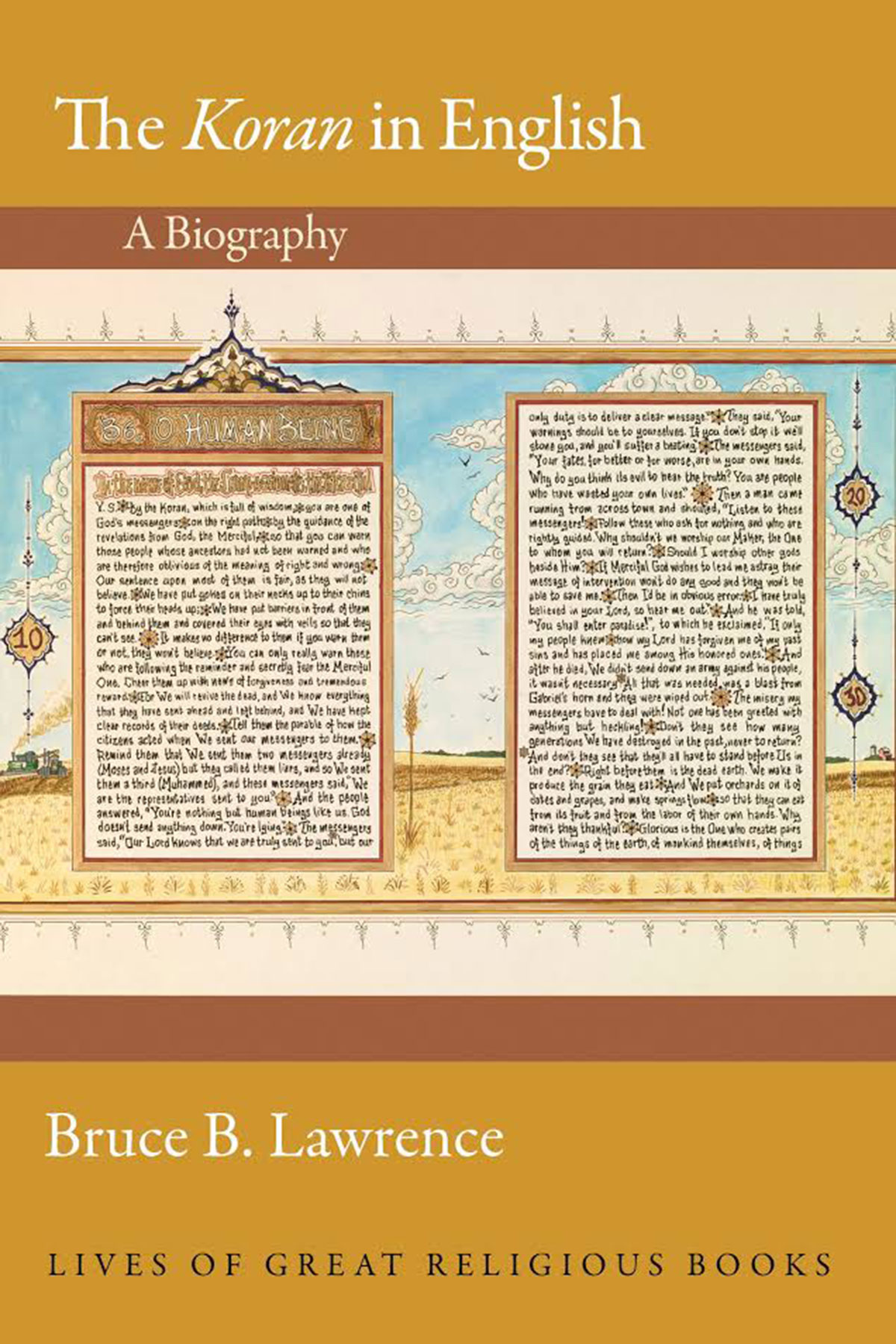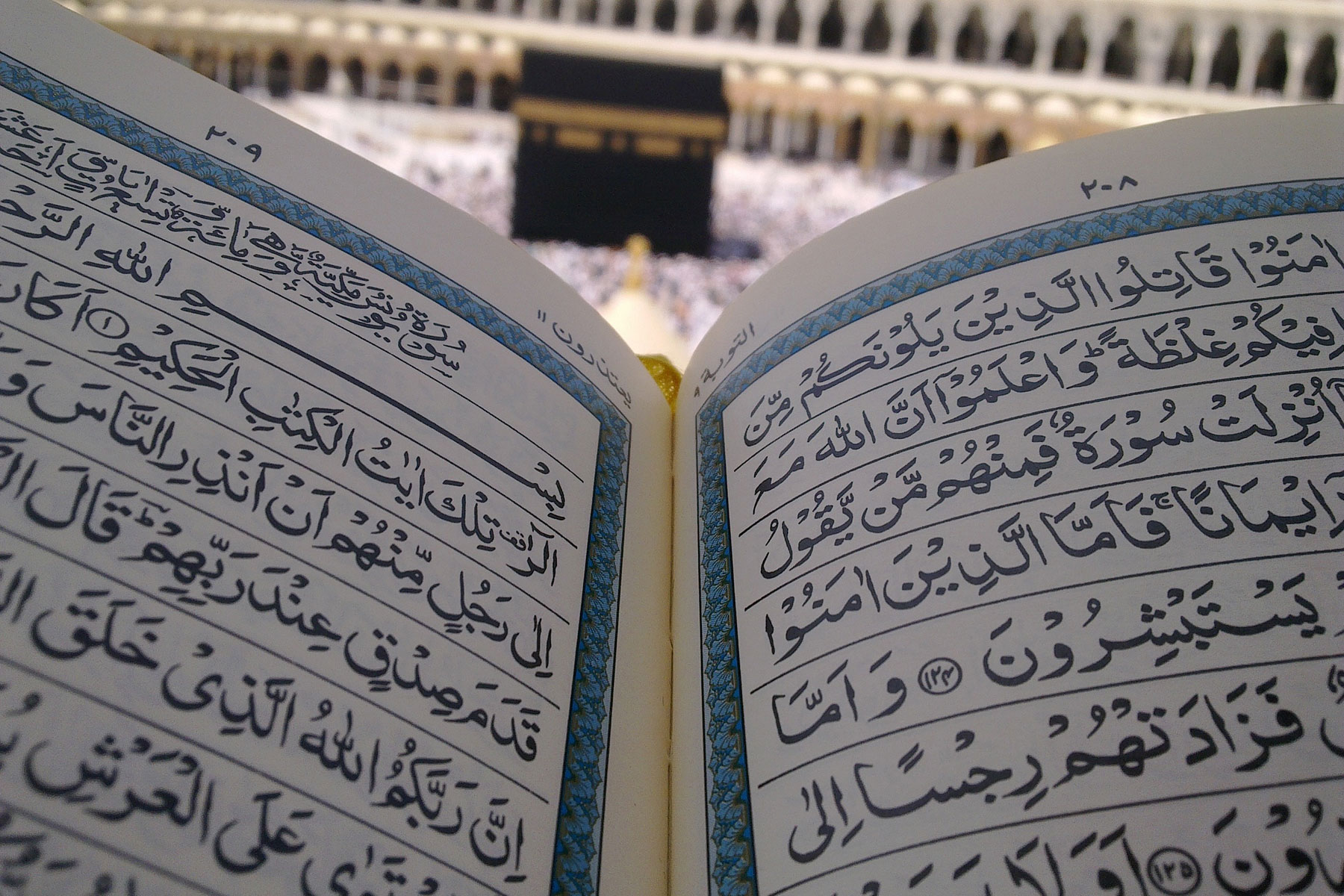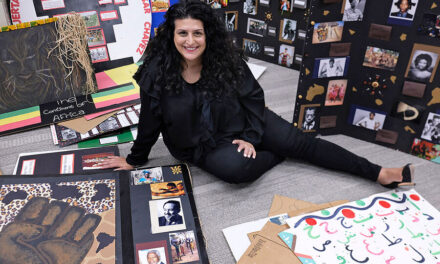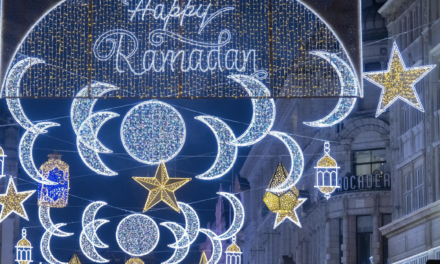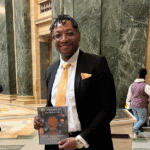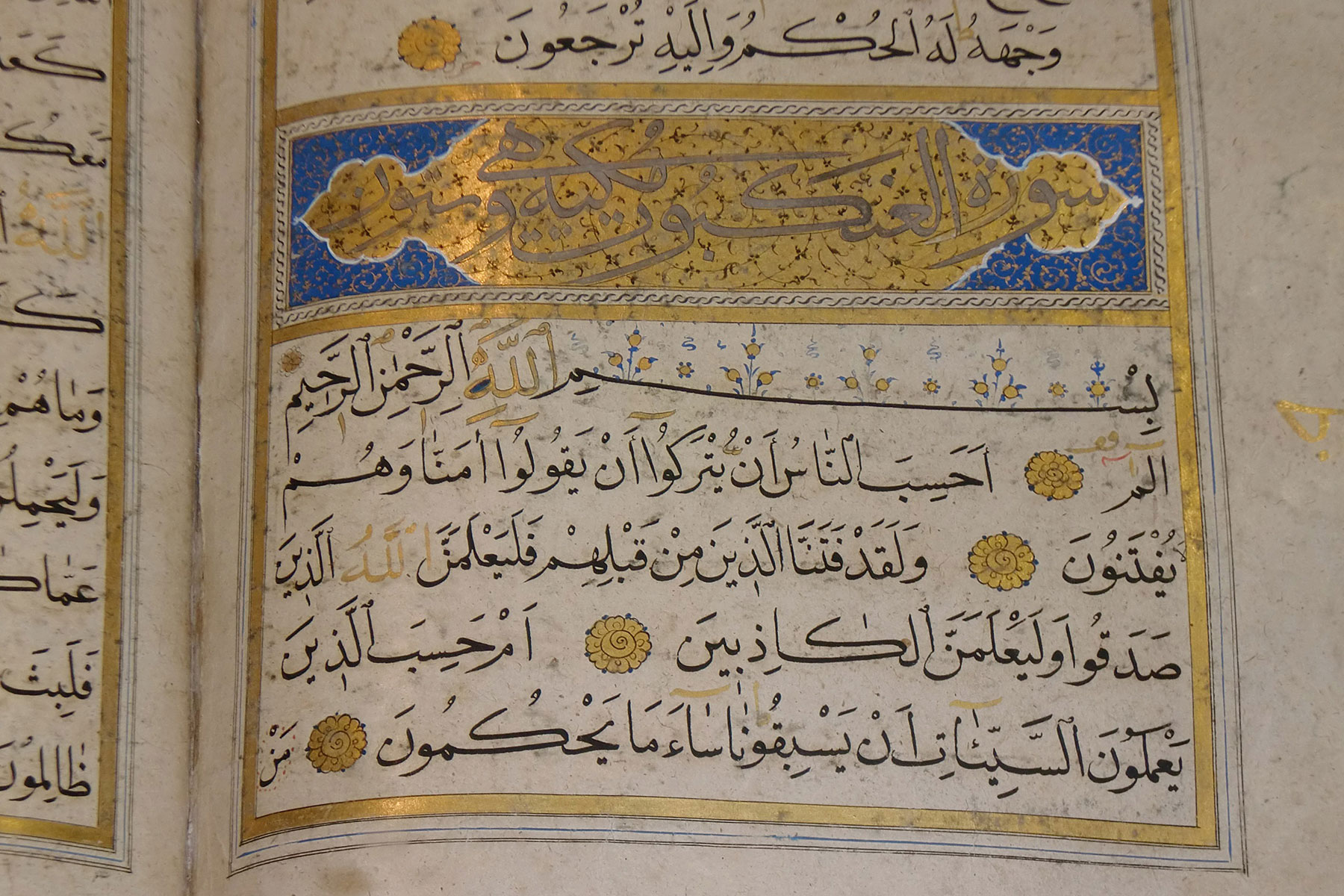
Written By
Jack Miles
© Link
Originally published on Los Angeles Review of Books as A Roadmap to Qur’ans in English
Bruce B. Lawrence, professor emeritus of the Duke University Islamic Studies Center, is the author of The Qur’an: A Biography (2006), published as part of the Atlantic Monthly Press series ‘Books That Shook the World.’ Now, as a more than welcome guide for the perplexed, comes a companion volume: The Koran in English: A Biography, in the thriving ‘Lives of Great Religious Books’ series at Princeton University Press. Lawrence makes the story of the Qur’an in English as informative as it is fascinating.
Robert of Ketton tops the list. With his 1143 Latin translation, he may be said to have translated the Qur’an into “European,” Latin being then the language of learning in Europe. Produced just as the Crusades were beginning, and given the polemical title The Law of the Pseudo-Prophet Muhammad and the Arabic Koran, Ketton’s translation nonetheless wins high marks from Lawrence for subtlety and even sympathy:
Robert understood what many of his European successors who attempted to translate the Qur’an did not understand: the long tradition of Arabic/Muslim commentary could help non-Muslims in their effort to move between different languages, cultures and religions. Robert used Muslim Qur’an commentaries […] and he made his own “loose” translations of difficult words or complex passages with knowledge gleaned from these same commentaries.
The Latin Qur’an effectively was the Qur’an in Europe for 500 years, or until André du Ryer published a French translation in 1647, the first into a European vernacular, and Alexander Ross, chaplain to Charles I of England, translated it into English just two years later. Like Robert of Ketton, du Ryer made good use of Islamic commentaries and, his disparaging comments on Muhammad notwithstanding, “we may conjecture that he too shared more sympathy with the text than his biting preface suggested.”
In 1734, George Sale published a translation that would remain dominant in English for two further centuries, Lawrence says, and “was certainly the Qur’an that Thomas Jefferson not only bought in 1765 but also consulted frequently in the early years of the Republic.” By Lawrence’s account, Sale was both publicly more salacious in his attacks on Muhammad than Ketton or Ross, but privately perhaps in even deeper sympathy with Islam than either of them. Some of his contemporaries suspected him of secret conversion.
In 1861, Sale’s translation was joined, though not superseded, by the translation of Reverend J. M. Rodwell, who rearranged the suras (chapters) of the Qur’an in a proposed chronological order and interpreted the work entirely through Muhammad as its author. For Rodwell, Islam’s prophet was “a syncretistic plagiarizer,” as well as “a manic-depressive epileptic, liable to hallucinations, who ‘worked himself up into a belief that he had received a divine call.’” His translation parallels the shift to historicist criticism that was already far along in biblical criticism.
In 1880, as part of Max Müller’s epoch-making, multi-volume series “Sacred Books of the East” at Oxford University Press, Edward Henry Palmer produced an erudite, relatively un-polemical Qur’an, Translated — a first attempt to bring the Arabic scripture into a more colloquial English, but it appears not to have attracted nearly as many readers as Rodwell’s.
Past Palmer, we reach a major turning point in the Qur’an’s life story with the sudden explosion, in South Asia, of no fewer than seven Muslim translations of the Qur’an into English before the outbreak of World War II. Lawrence’s third chapter, “The South Asian Koran,” dealing with four of these, is the most engrossing in the book.
The path-breaking first of the four was Muhammad Ali, whose The Holy Qur’an: With English Translation and Commentary appeared in 1917, with subsequent revised editions until 1951. “The notion that the Truth resided in a Book had always been central to consideration of the Qur’an,” Lawrence writes, “but before the twentieth century it had not been applied to the Qur’an in translation.” With Muhammad Ali, this assumption began at least to weaken. He was an Ahmadi — a Muslim who believed that Mirza Ghulam Ahmad (d. 1908) was the Mahdi or Muslim Messiah. The related movement, called Ahmadiyya, channeled its early missionary fervor into the hope that Islam could spread with and through the spread of the English language. Ahmadiyya’s response to Protestant missionaries in India was to send Ahmadi missionaries — and Muhammad Ali’s translation — to England and America. One American result of this effort was the adoption of this translation by Elijah Muhammad and the Nation of Islam. Sunni prejudice against Ahmadis, however, has meant that this translation, which Lawrence finds admirable, is banned in Egypt and officially disparaged in “orthodox” Muslim circles. I myself have found it surprisingly hard to come by.
The second was Muhammad Marmaduke Pickthall, an experienced journalist and novelist, a largely self-taught orientalist, a consummate Englishman (Winston Churchill was his classmate), and a convert to Islam who spent much of his life in India. Pickthall brought the Qur’an into an orotund English after the manner of the King James Version. His translation has had 150 editions, Lawrence reports. It was my own first Qur’an. Pickthall’s Qur’an is sure to find new readers in the Norton Critical Editions series, now that the eminent Jane Dammen McAuliffe has updated it line by line for republication this year, with annotations and abundant supportive material. McAuliffe’s goal, reported to Lawrence, is to put Pickthall’s intentionally “elevated” language “into more contemporary English where needed.”
Standing culturally between the ardent Muhammad Ali and the slightly plummy Marmaduke Pickthall is the Anglophile Indian Abdullah Yusuf Ali, more commonly known by the briefer name Yusuf Ali. Born to wealth and aristocratic education during the British Raj as the son of a Sunni mother and an Isma’ili (Shi’a) father, Yusuf Ali “was one of few Indians to gain admission in the Indian Civil Service.” For him, Qur’an translation was an avocation and a labor of love that brought the two cultural worlds to which he belonged together in a huge translation with 6,000 footnotes: The Holy Qur’an: Text, Translation, and Commentary (1937). “Instead of Tabari, Zamakhshari, and Razi [classic Muslim commentators],” Lawrence writes, “Yusuf Ali invokes Shakespeare, Milton, and Tennyson.” Ignored by Muhammad Iqbal, the nationalist South Asian Muslim poet and intellectual who had once encouraged him, and damagingly mocked by the rivalrous Pickthall, Yusuf Ali died in penury and obscurity, and yet his translation has gone through 150 editions, by Lawrence’s count.
A religiously and aesthetically sensitive English translation, in Lawrence’s estimation, is that of the prolific British polymath A. J. Arberry, holder of professorial chairs in both Persian and Arabic. In his 1955 The Koran Interpreted, Arberry declared his intention to “imitate, however imperfectly, those rhetorical and rhythmical patterns which are the glory and the sublimity of the Koran.” He was one of the very first to entertain such a hope; he would not be the last.
Like Marmaduke Pickthall, Muhammad Asad, was an honorary South Asian, the fourth in Lawrence’s South Asian quartet. Born Leopold Weiss in what is now Lviv, Ukraine, he received both a traditional Jewish and a secular education and achieved early success as a journalist covering the Middle East. Then, in 1926, he experienced a sudden, total, and ecstatic conversion to Islam, and commenced a remarkable career in diplomacy, figuring significantly in the birth of Pakistan, whose citizen he remained to the end of his life.
Two things strike me about Asad’s translation. First, there is the astonishing fact that his smoothly idiomatic, if deliberately archaizing (“thee,” “thou,” et cetera) Qur’an is a translation from one acquired language, Arabic, into another, English. Leopold Weiss, we may presume, grew up speaking Yiddish at home and hearing Ukrainian and perhaps Polish on the streets of Lviv. Second, there is the fact that, with the possible exception of Yusuf Ali’s Holy Qur’an, Asad’s The Message of the Qur’an (1980) had the longest gestation of all those so far mentioned. Lawrence calls his style “pointillist” — a rather odd characterization. As one with only a smattering of Arabic, I would rather call the impression it leaves “meticulous” or “immaculate.” Banned in Saudi Arabia for sectarian (Wahhabi) reasons, and perhaps also for its occasional rationalist moments, the translation has been widely distributed, gratis, in the United States by the Council on American-Islamic Relations in a sumptuous Book Foundation Press edition underwritten, ironically, by a Saudi family, the Alireza. Asad’s translation is available online here.
For decades, if not generations, other publishers have envied Oxford University Press the rich income it has derived from Bible publishing into the world Christian market. From Lawrence we now learn that Oxford is extending that success with a translation of the Qur’an that is “far and away the best seller in English.” Muhammad Abdel Haleem’s The Qur’an, published by Oxford in 2004, seems to have surged into the lead partly because its publisher has made it available online. Lawrence devotes an entire chapter to “The Virtual Koran and Beyond,” noting that there has been an enormous proliferation of new online translations but quoting with approval a recent survey that adjudged many “simply unreadable: they have no aesthetic appeal, do not communicate the dimension of the Qur’an as a religious text, and in some cases, by straining after effect, make the Qur’anic message appear naïve.”
Happily, Abdel Haleem’s translation, as the work of an Egyptian-born professor of Islamic Studies at the London School of Oriental and African Studies, is a significant exception to this sad rule. Lawrence finds it “refreshingly clear and simple,” even though Abdel Haleem “makes no effort to match [the Qur’an’s] rhythms with English equivalents” and offers “traditional, even conservative renderings of most verses.” Abdel Haleem’s introduction reviews several major previous English translations, noting their strengths, but also their relative acceptability to “Muslims” or “Arabs and Muslims,” a stance that may well commend his work to the mainstream Muslim audience that Oxford may be aiming for, available online here.
While the internet may foster the publication of hasty or dubious Qur’an translations, it also enables exceptional ease in comparing translations. Lawrence gives highest marks to www.islamawakened.com, the creation of an American convert, where one may conveniently and in detail compare no fewer than 54 translations.
Any comparative consideration of translations eventually must come down to representative verses. When Lawrence reaches this point, in his fifth chapter, he devotes exceptional attention to Thomas Cleary, The Qur’an: A New Translation, appearing in 2004, the same year as Abdel Haleem’s. Where Abdel Haleem’s concern is entirely with content, Cleary’s is exceptionally attentive to form. I own an earlier, partial Qur’an translation of his entitled The Essential Koran: The Heart of Islam (1993) whose goal, to quote its introduction, was “to form a rosary of readings and recitations intended to introduce the non-Muslim reader to the essential wisdom, beauty, and majesty of this sacred book.” The sensibility that informs Cleary’s substantial introduction is very much that of a poet — a learned poet, but still a man determined to use learning in the service of devotional art rather than vice versa:
In stringing these verses together in a rosary for recitation, for the most part I have followed the Arabic original in division of verses. The division of verses into lines, in contrast, has nothing to do with the Arabic original but with the cadence of the English and the psychological weighting of words, which have tremendous individual force in the Qur’an.
In this connection, it is essential to observe that this English version is intentionally designed for reading aloud, for absorption and reflection, because this is characteristic of the Qur’an itself, from the very beginning of its revelation.
A full decade passed between Cleary’s Essential Koran and his The Qur’an: A New Translation. The earlier work is still in print; sadly, the later one appears now to be out of print. In his introduction to the Essential Koran, Cleary makes the comment that the character of the Qur’an’s language is such as to make “most renditions of the Qur’an look much alike to non-Muslim Westerners at first glance.” Too true! And this is the difficulty that besets Lawrence’s comparisons in his fifth chapter, “The Koran Up Close,” affecting even a sample from his own forthcoming The Qur’an: A Verse Translation (2019), in collaboration with Rafey Habib.
Why is this so? Because the minor differences that matter hugely and speak loudly to those who know the original quite escape readers who know only the comparatively presented translations. To this generalization, however, there is one electrifying exception in the set of translations that Lawrence puts on display. He introduces his readers to samples of a mostly unpublished verse translation-in-progress by Shawkat M. Toorawa, a professor of Near Eastern languages and civilization at Yale University. Here is Toorawa’s translation of the brief entirety of Sura 112:
In the Name of God, Full of Compassion Ever Compassionate
Affirm: He is God, Matchless
God, Ceaseless,
Unbegetting, Birthless,
Without a single partner, Peerless.
Compare this to, say, Muhammad Ali:
In the name of Allah, the Beneficent, the Merciful
Say: He, Allah, is One.
Allah is He on Whom all depend.
He begets not, nor is He begotten;
And none is like Him.
And here is Toorawa’s rhyming and rhythmically rolling translation of Sura 19:16-20:
Recall Mary in the Scripture, when she withdrew from her people to a place easterly.
She placed a screen between them and her. Then We sent her Our Spirit, who appeared to her as a man, formed fully.
She said, “I seek refuge from you with the Lord of Mercy! Away, if you have true piety!”
“I am only a messenger from your Lord,” he said, “come to bestow on you a son of great purity.”
“How can I have a son,” she asked, “when no man has touched me and I have not engaged in harlotry.”
John Milton wrote a famous pair of poems entitled “L’Allegro” and “Il Penseroso.” Thinking musically, I would call these two Shawkat samples “Lo Staccato” and “Il Legato.” They are a stunning exception to Cleary’s otherwise easily validated generalization about Qur’an translations blending frustratingly together. Toorawa’s lines, moreover, have the elusive mix of playfulness, subtlety (easily mistaken for naïveté), and cumulative impact that one encounters in French medieval mystery plays like Le Jeu d’Adam. If Toorawa manages to complete this translation, it could be epoch-making.
From the art of the Qur’an, Lawrence turns to “The Politics of Koran Translation” in his sixth chapter. Worldwide, Saudi Arabia force-feeds many millions of its favored Qur’an translations — 286 million as of 2015. Its earlier favorite, an adaptation of Yusuf Ali, has now been replaced by a commissioned translation by Muhammad Taqiuddin al-Hilali and Muhammad Muhsin Khan (completed 1993). Of their effort, Lawrence quotes a Muslim reviewer: “From the beginning, the Hilali and Muhsin Khan translation reads more like a supremacist Muslim, anti-Semitic, anti-Christian polemic than a rendition of Islamic scripture.” In open competition for the mass Muslim market for the Qur’an in English, the major contenders thus appear to be King Salman with this translation and Oxford University Press with the already mentioned Abdel Haleem.
In the distinctly American tradition of study editions of classic texts, two more recent translations receive brief but sharp mention in The Koran in English. One is A. J. Droge, whose The Qur’an: A New Annotated Translation (2013) Lawrence praised on its publication. Droge, in introducing his translation, writes:
My goal has been to make the translation literal to the point of transparency, as well as to maintain consistency in the rendering of words and phrases, and even to mimic word order wherever possible. The result is a kind of Arabicized (or Qur’ānicized) English which strives to capture in translation something of the power and pervasive strangeness of the original.
The intent and the willingly awkward effect are both quite remote from the approach of Thomas Cleary, whose The Essential Qur’an Lawrence praised even more warmly on its publication. I infer that Lawrence favors experimentation, especially of the artistic sort, and honors differing strengths where he finds them. Here, he passes over Droge’s deliberately awkward style in silence, but honors him for helpful notes, including cross-indexing to the Christian and Jewish scriptures.
As annotation and commentary, however, Lawrence finds Droge overtaken by S. H. Nasr et al., The Study Quran: A New Translation and Commentary (2015). In writing of the earliest Qur’an translations, Lawrence stresses the importance of consulting ancient commentaries. Nasr and his several collaborators consult no fewer than 40 as well as six different prior translations. Lawrence calls this edition, nine years in the making, a “monumental labor” that “dwarfs all other efforts in English to provide both a translation and commentary on the Qur’an.” He predicts that it will be the edition of choice for academics, and I am sure he is right about that. The Study Quran is selling steadily, and rumor has it that a pirated edition has appeared in Pakistan, which is certainly a compliment of a sort. “Alas, however,” Lawrence adds, “the translation is wooden and archaic, only serviceable as a bridge to the commentary.”
Here is The Study Quran at Sura 19:16-20:
And remember Mary in the Book, when she withdrew from her family to an eastern place.
And she veiled herself from them. Then We sent unto her Our Spirit, and it assumed for her the likeness of a perfect man.
She said, “I seek refuge from thee in the Compassionate, if you are reverent!”
He said, “I am but a messenger of thy Lord, to bestow upon thee a pure boy.”
She said, “How shall I have a boy when no man has touched me nor have I been unchaste.”
“Pure boy” is a fair example of slightly odd English phrase pointing toward commentary, and, in fairness, the related commentary in The Study Quran — once one is over the bridge — is richly forthcoming. The English of these few verses is perfectly clear and idiomatic, but undeniably makes a sharp contrast with the undulating Shawkat Toorawa translation of the same lines just quoted.
One other feature of the landmark Study Quran, not mentioned by Lawrence, deserves mention. S. H. Nasr, in his introduction, explains that when approached by Harper San Francisco (now HarperOne) about preparing a study Qur’an to match that publisher’s widely used study Bible,
I […] accepted with humility on the condition that this would be a Muslim effort and that, although the book would be contemporary in language and based on the highest level of scholarship, it would not be determined or guided by assertions presented in studies by non-Muslim Western scholars and orientalists who have studied the Quran [sic] profusely as a historical, linguistic, or sociological document, or even a text of religious significance, but do not accept it as the Word of God and an authentic revelation.
As he then proceeds to introduce the scholars who collaborated with him on this edition, Professor Nasr notes that each has impressive academic credentials alongside the confessional requirement he has just stipulated. He also notes the diversity of their backgrounds within the Muslim world: Sunni and Shiite, South Asian and Middle Eastern, converts of Christian background and born Muslims.
It is beyond the scope of this review as well as beyond my competence to assess how the condition Professor Nasr imposed on the production of this commentary may have affected its content. I do note a certain parallel with the broad stance taken in the introduction to Abdel Haleem’s translation. Should HarperOne, like Oxford University Press, make its Study Quran available online, perhaps with a streamlined commentary, it might compete with Oxford for the mass Muslim market as well as the academic market. Lawrence regards this as unlikely, but perhaps only time will tell.
¤
Opening this review, I called Lawrence’s information-packed book a “guide for the perplexed,” thinking of lay readers who may be curious about the Qur’an and willing to read a translation, but who lack any criterion for choosing one. Lawrence himself certainly does not present his work as a buyer’s guide. In fact, he studiously abstains from awarding stars or tomatoes or thumbs up. But taking the step that he discreetly declines to take, my recommendation for readers approaching the Qur’an for the first time (or, perhaps, rebuffed on a first attempt, but willing to try again) is to begin with Cleary’s Essential Qur’an, which does include a few essential endnotes. Especially if read aloud and meditatively, as Cleary recommends, this “rosary for recitation” will give some sense of how the Qur’an works, aesthetically, for those who hear it. S. H. Nasr himself praised it on publication for selecting “certain passages which are more accessible to those seeking from the outside to understand its meaning.” By putting these passages in accessible language, Nasr credits Cleary with “opening the doors for many readers to the inexhaustible treasures of the Sacred Text.” Once through those doors, if and when the content of some particular passage intrigues the outsider and the desire arises to find out what the Qur’an is actually saying, he or she may turn to The Study Quran, and read the annotations for that passage, perhaps the sura introduction or other material that the commentary may point to.
Meanwhile, the curious who don’t want to buy anything may go online and read either Muhammad Asad or Muhammad Abdel Haleem. Both are devout Muslims. Asad, as it seems to me, writes as a Muslim, but for the world, explaining rather more along the way than Abdel Haleem does. Abdel Haleem, as suggested, also writes as a Muslim, with clarity and sometimes with grace, but his target audience is clearly the Ummah.
In an appendix to his book, Lawrence lists 60 Qur’an translations from the 20th century and already 45 (the pace is picking up!) from the 21st, plus 13 partial translations, and seven from before the 20th century. Not all of these are discussed on his pages; of those that he does discuss, I have only singled out those I find most important or interesting. Moreover, I have not tried to engage his chapter-long discussion of the translation he clearly finds most interesting of all. This is American Qur’an, a pastiche of past translations in which the successive suras are framed by paintings of contemporary American scenes. Sandow Birk, an American artist, devoted years to this undertaking, and Lawrence clearly finds it a major work of graphic and textual art. I myself, having spent a little time with it, find it impressive, but certainly not in a way that would make the Qur’an any more relevant or appealing to a non-Muslim American viewer. As for Muslims, since Islamicate cultures are in general so strongly aniconic, will this “graphic Koran” (Lawrence’s chapter title) be seen as a breakthrough or only an aberration? As a non-Muslim, I can only wonder. In a way oddly parallel to The Study Quran, the suras in American Qur’an only serve “as a bridge to the [visual] commentary.” What came to my mind, as I held and beheld the American Qur’an, was the Watts Towers. Remarkable, yes; one of a kind, indeed; but one such is quite enough.
American Qur’an appeared in 2015, the same year as The Study Quran, and so brings Bruce B. Lawrence’s brief, but indispensable book to a chronologically appropriate conclusion. The secondary message of American Qur’an — and I willingly concede this much to it — is that although we now know where the Qur’an has been in English, thanks to Lawrence’s diligence in research and clarity in exposition, we do not yet know where it will go. Its story is by no means over yet.
